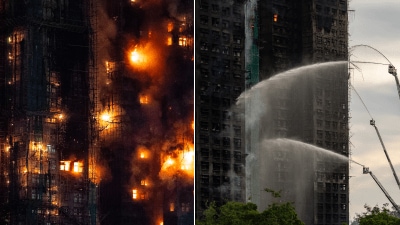The Punjab Police Monday formed a five-member Special Investigation Team (SIT) to probe into the reasons and fix accountability for the leakage of toxic gas in Ludhiana’s Giaspura locality Sunday after inhaling which 11 people died. The police also warned the officials at the Punjab Pollution Control Board (PPCB) that if they don’t cooperate and help them in reaching the culprit, they will be booked in the FIR registered in the case.
Tragedy struck the thickly populated Giaspura Sunday morning when 11 people, including five of one family and three from another, died allegedly after inhaling toxic gas, suspected to be Hydrogen Sulphide. The area, dotted with industries and residences, is largely inhabited by migrants from Uttar Pradesh and Bihar.

More than 24 hours of the incident, the PPCB and police officials are still groping in dark about the exact source of the gas leak even as it is suspected that it may have emanated from a broken manhole nearby.
District authorities said the locality underwent a night-long decontamination process, involving putting caustic soda in drains and sewerage lines to counter the hydrogen sulphide build-up.
Teams of the National Disaster Response Force and the municipal corporation took readings of the ambient air quality in the area throughout the night, Ludhiana deputy commissioner Surabhi Malik said. “Hydrogen sulphide was no longer detected in the air. During the night, the level of hydrogen sulphide in the manholes was high but it went down after the chemical decontamination process. Why there was so much build-up (of gas) in this area only, it is a subject matter of investigation,” she said, adding that the cordoned-off area has been reduced to 50 metres from initial 250 metres from the incident spot.
Meanwhile, Ludhiana Police Commissioner Mandeep Singh Sidhu said that the SIT will be led by Deputy Commissioner of Police (Investigation) Harmeet Singh Hundal. Additional DCP-2 Suhail Qassim Mir and ADCP-4 Tushar Gupta as its members. He said that while police was checking the CCTVs to find any clue about the persons who dumped industrial waste into the sewage, “but if nothing is visible to the eyes in CCTVs, then the onus would be on PPCB to cooperate with police in reaching the culprit.”
“PPCB is the nodal agency to check pollution and working of industries. It is their job to check if industries are involved in any wrongdoing. It is only PPCB officials who can tell us which industries were complying with norms and which were not. What if some industry was dumping waste into sewage through an internal connection? Only PPCB can help us reach them. If PPCB officials won’t cooperate, they too will be booked in the same FIR,” said CP Sidhu.
Story continues below this ad
The officials had earlier said the poisonous gas might have been released after some chemical was disposed of in the sewerage in the area. A magisterial inquiry has already been ordered, and police have registered an FIR under IPC section 304 (culpable homicide not amounting to murder) against unidentified persons at Sahnewal police station.
“The motive is not to humiliate or insult any department but 11 lives have been lost. Many more are at stake in future. Industrial growth cannot come at the cost of people’s lives,” he added.
Sidhu said that prima facie, some electroplating industry might have dumped their waste in the sewage. “And it was not done just for a day, it was being done continuously and the build-up finally led to this tragedy,” said Sidhu.
Speaking to The Indian Express, Sidhu said: “According to locals, many industries nearby dump waste in sewage every weekend but no action is taken against them”.
Story continues below this ad
Meanwhile, GS Majithia, member secretary, PPCB said that an inquiry report was being prepared by the board at its own level.
“Hydrogen sulphide is a sewer gas. We are conducting a probe and a team of XENs and SDOs are on the ground to collect samples and check industries within 200-metre radius. The report will be compiled within two days to check if any industry discharged effluents in sewage,” he said.
“We have called experts from Thapar Institute of Engineering and Technology, Patiala, to widen the probe,” he added.
CP Sidhu said viscera and blood examination reports of the deceased were awaited to ascertain the type of gas inhaled by them. Speaking to The Indian Express, a senior scientist, requesting anonymity as he is not authorised to speak to media, said that though hydrogen sulphide was one of the “marsh gasses” naturally produced in the sewer, “it has to be in overwhelming concentration for a person to die.”
“It is not usual at all for 11 persons to die, who were not inside the sewage or having direct exposure to the sewage gasses. Either the hydrogen sulphide was in overwhelming concentration that it led to neurotoxicity or there’s some other chemical too which acted as a catalyst and amplified its impact. Only the results of samples taken from manholes can give
some clarity over it,” said the expert.
Meanwhile, some local residents alleged the Ludhiana Municipal Corporation cleaned sewer lines at 1 am last night using high power jet and suction machines to clear choked sewage.









